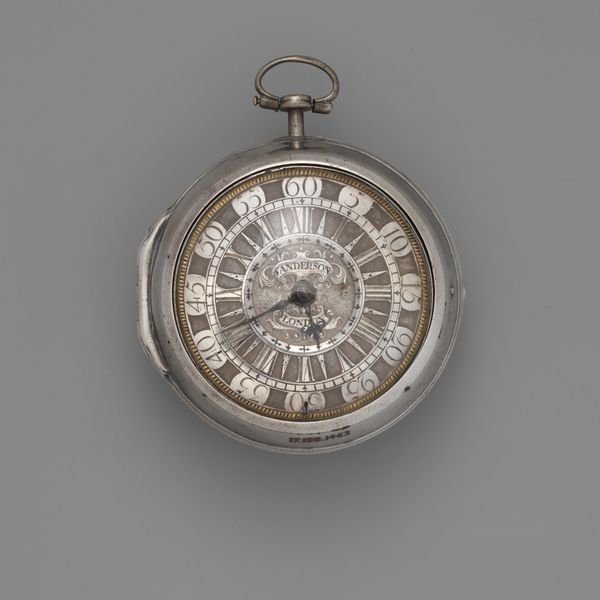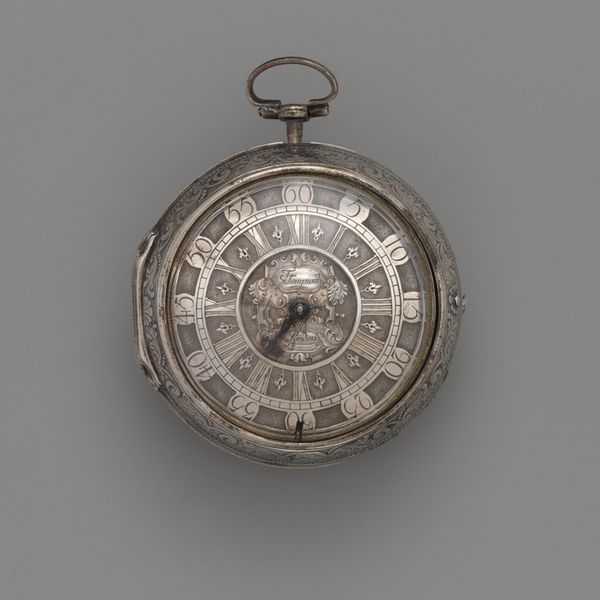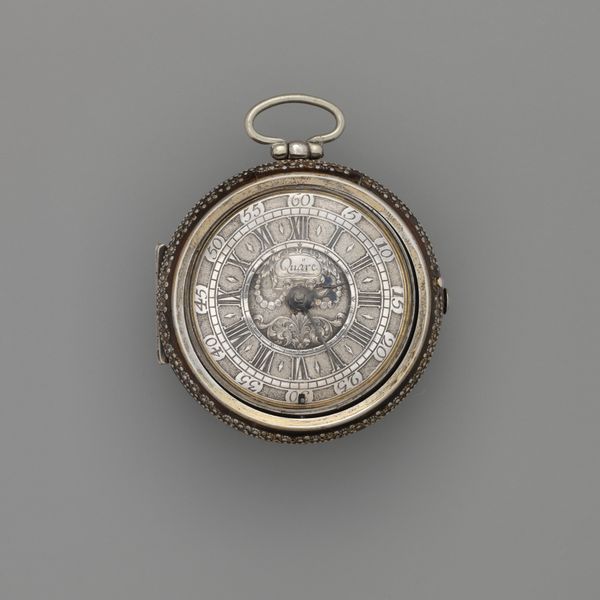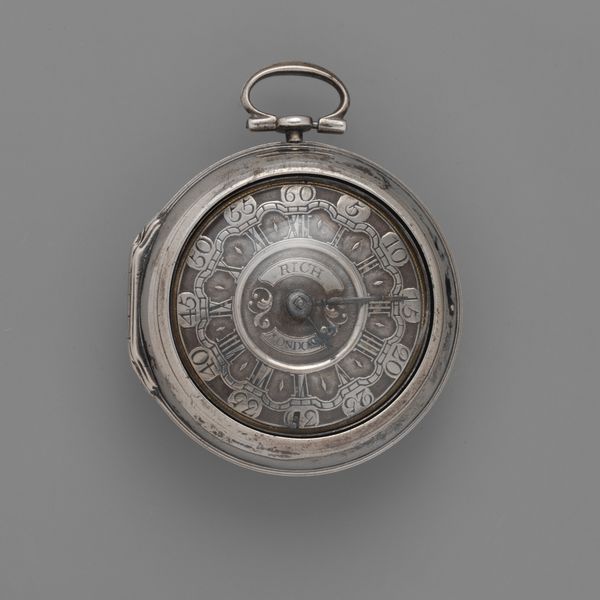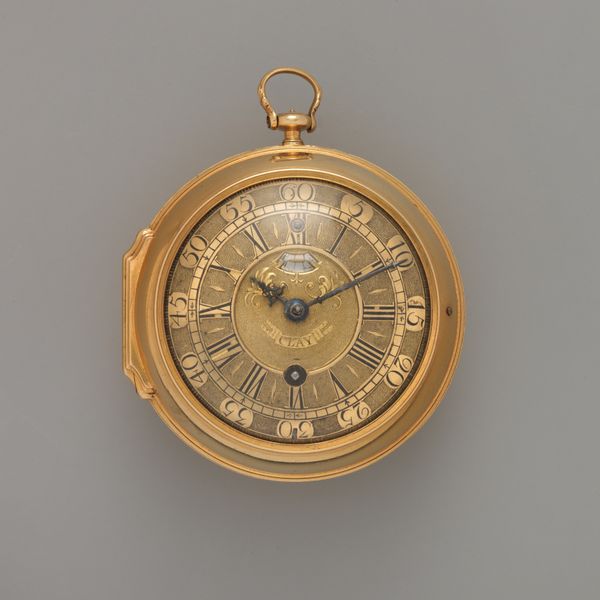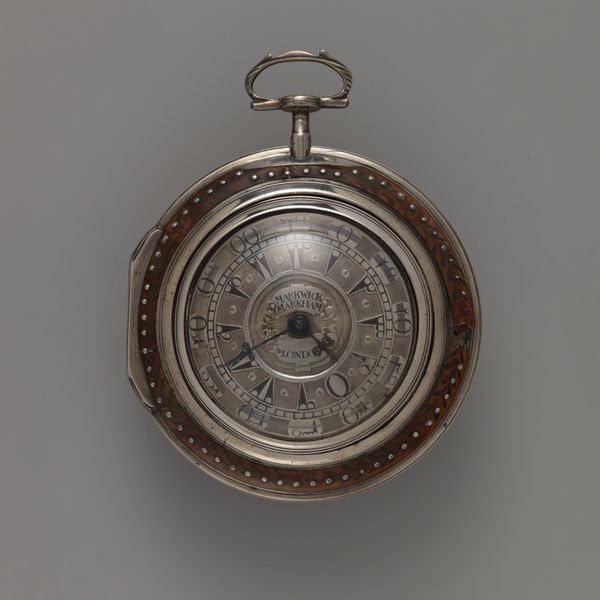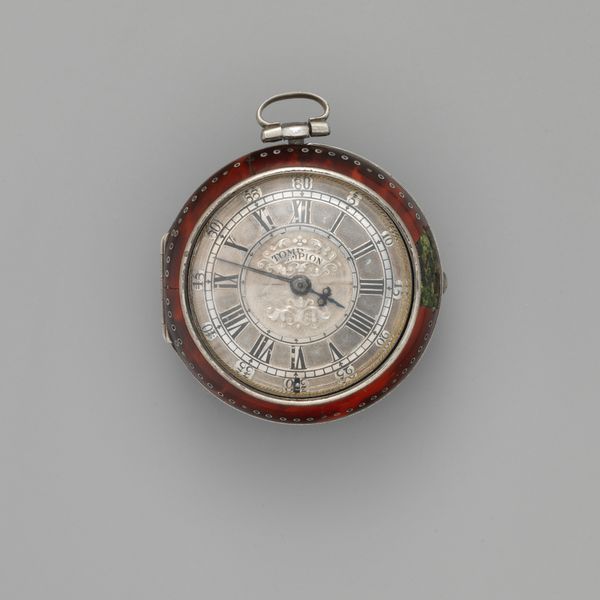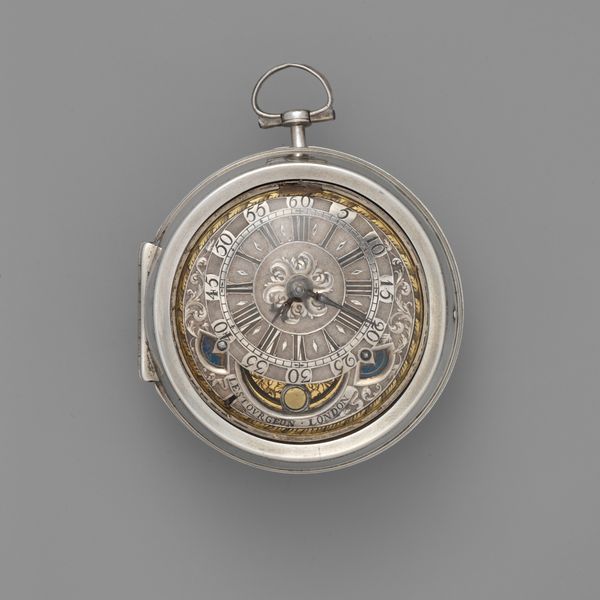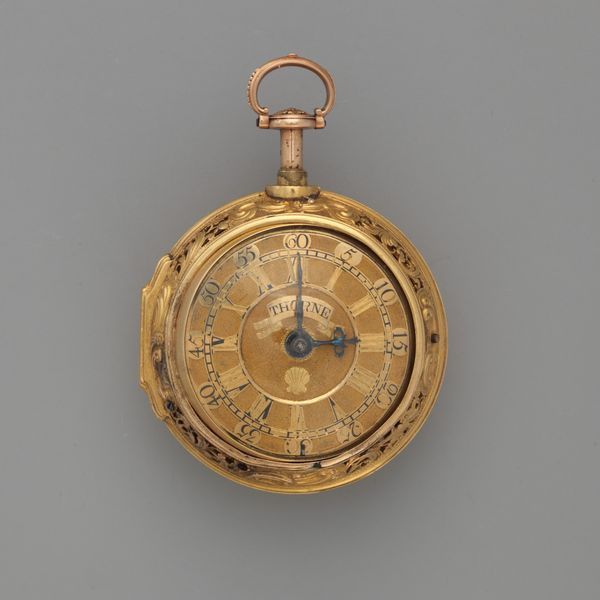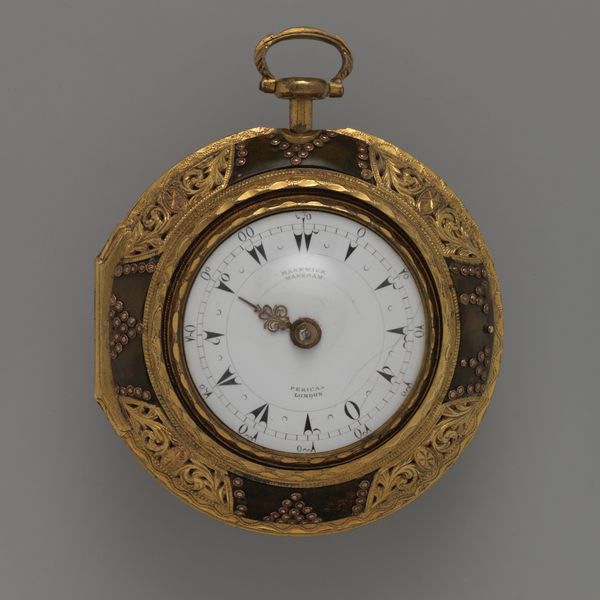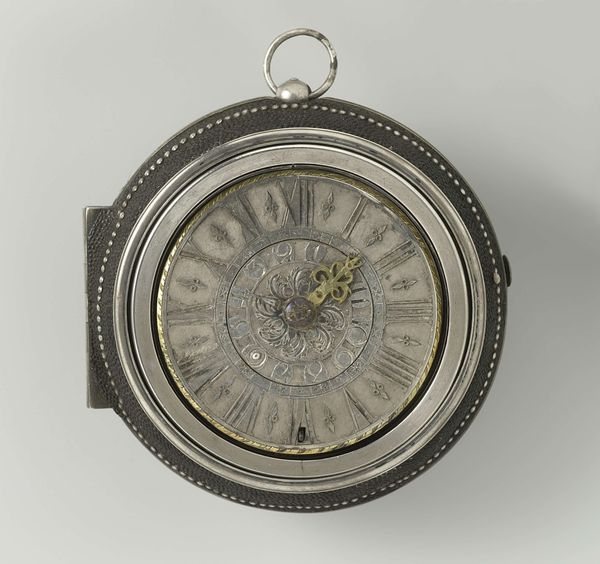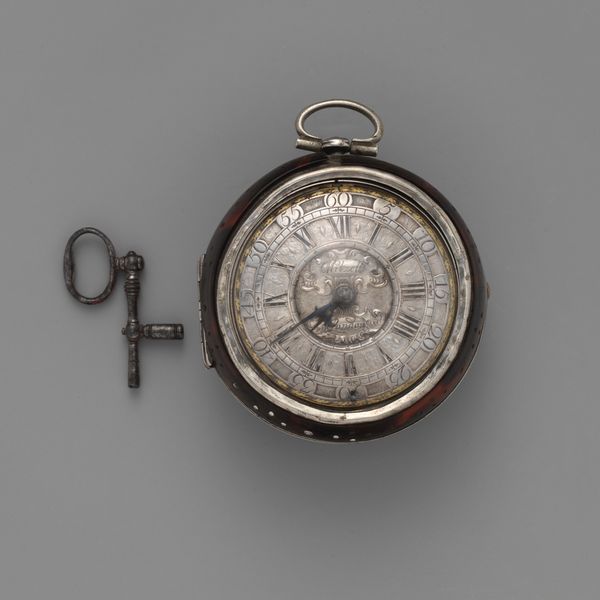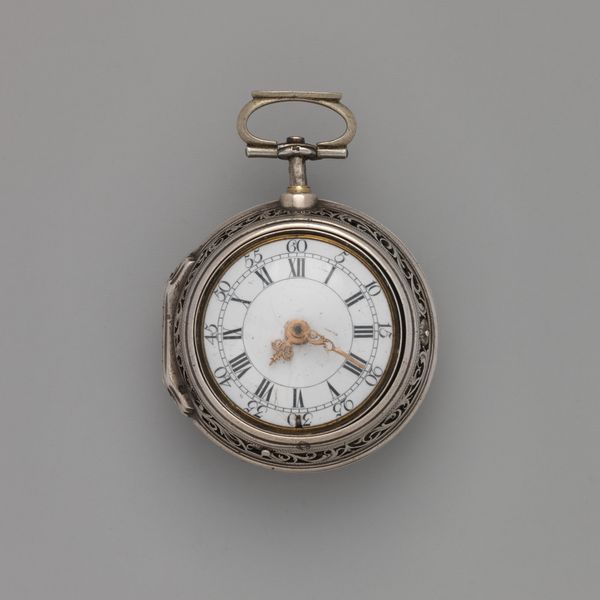
silver, metal, sculpture
#
silver
#
baroque
#
metal
#
sculpture
#
decorative-art
Dimensions: Overall (with bail raised, confirmed): 3 7/8 × 3 1/16 × 1 9/16 in. (9.9 × 7.8 × 4 cm)
Copyright: Public Domain
Editor: Here we have the 'Traveling Watch', crafted by Isaac Rogers between 1754 and 1764. It's a beautiful silver timepiece, currently held at the Met. I’m struck by the intricacy of the face, the ornate numbers, and the weight it must have had. How does an object like this speak to its time? Curator: It’s fascinating how a seemingly functional object like a watch becomes a symbol of broader social and political shifts. This 'Traveling Watch', with its Baroque sensibilities and being signed 'Isaac Rogers, London,' hints at Britain's rising dominance in global trade and craftmanship during the mid-18th century. This wasn't just a time-telling device; it was a statement. Editor: A statement of what, exactly? Is it just wealth? Curator: It signifies wealth, yes, but more importantly, it's about England establishing its cultural and economic identity on a global scale. The silver, the detail—it reflects a consumer culture taking root, where owning finely crafted objects showcased one's position. Consider the burgeoning merchant class who required accurate timekeeping for trade across expanding empires. Where would such a person carry this precious item? Editor: In a waistcoat pocket, perhaps? I’m thinking about how this watch allowed the elite to schedule meetings, navigate complex financial deals… time becomes a tool. Curator: Exactly. The rise of time consciousness becomes entwined with power dynamics. Whose time is valued? Who controls the clock? Objects like these contributed to an evolving sense of structured time in governance, commerce, and public life, extending far beyond just personal use. Editor: So, it is less a practical instrument and more a totem of power, of London as an emerging global center. Looking at it now, it makes you wonder what future everyday objects will signify to historians centuries from now. Curator: Indeed. Everyday things often have complex implications when unearthed and displayed. Hopefully, this brief consideration illustrates how we can excavate hidden historical realities that shape both our perception and our understanding of ourselves.
Comments
No comments
Be the first to comment and join the conversation on the ultimate creative platform.
